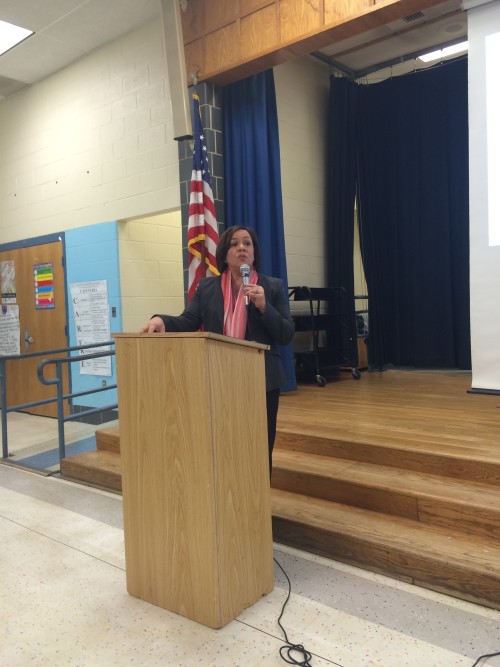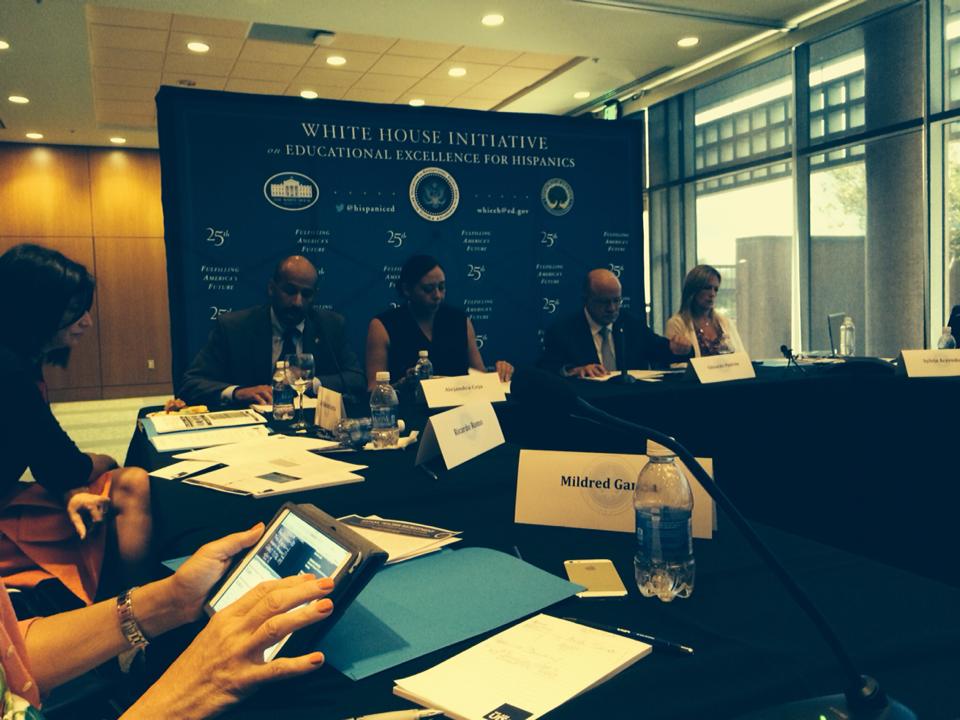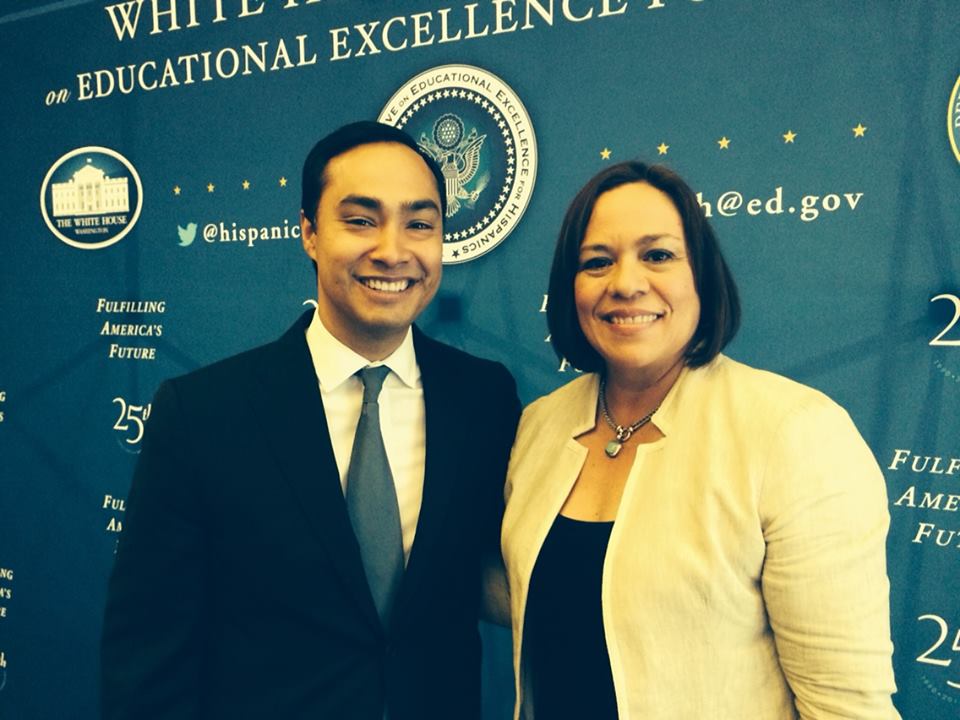At Event on Monday, Sept. 23, in Rockville, They Will Address Importance of Voting Rights in Montgomery County, D.C. and Nationwide
ROCKVILLE, Md., September 20, 2013—Montgomery County Council President Nancy Navarro will be joined by U.S. Senator Ben Cardin, Congressman Chris Van Hollen, D.C. Mayor Vincent C. Gray and other community leaders at 10:30 a.m. on Monday, Sept. 23, in support of action at all levels of government to improve and protect the right to vote of citizens in Montgomery County, Washington, D.C. and across the country. Council President Navarro will be highlighting her “Right to Vote” resolution that was recently introduced before the Council.
Council President Navarro’s resolution calls for creation of a task force that will review and offer recommendations to improve the election processes in Montgomery County. The resolution, which is co-sponsored by the other eight members of the County Council, also calls for Congress to strengthen the Voting Rights Act of 1965. Council President Navarro’s “Right to Vote” resolution would “affirm the Council’s commitment to expanding participation in elections and protecting voting rights for all of our residents.”
The event will be held on the front steps of the Council Office Building at 100 Maryland Ave. in Rockville.
Also expected to attend the event are Council Vice President Craig Rice and Councilmembers Phil Andrews and Nancy Floreen. State Senators Rich Madaleno and Jamie Raskin and Takoma Park Councilmember Tim Male also are expected to attend, as are representatives of FairVote, the ACLU of Maryland, Common Cause Maryland, the Montgomery County Young Democrats, the Montgomery County Muslim Council, the District 39 Democratic Club and the County Board of Elections. Representatives from the offices of Senator Barbara Mikulski, Congressman John Sarbanes and Congressman John Delaney also are expected to be in attendance.
Final approval of the Montgomery County resolution is set for Tuesday, Sept. 24. It was formally introduced before the Council on Sept. 10.
“With states like North Carolina and Texas rolling back voting rights and instituting draconian photo ID laws, the need for robust federal enforcement of election law is needed more than ever,” said Council President Navarro.
The resolution also calls on Congress to give residents of the District of Columbia full representation and voting rights in the House of Representatives and the United States Senate. At the local level, the resolution urges the Montgomery County Board of Elections to select new early voting sites that are easily accessible by public transportation.
The text of the resolution can be found at: http://www.councilmembernavarro.com/wp-content/uploads/2013/09/RighttoVoteResolution_9-4-13.pdf
The complete text of Council President Navarro’s statement regarding the resolution:
The right to vote is the cornerstone of our democracy, yet this fundamental right is not explicitly protected in the U.S. Constitution. While Governor O’Malley and the Maryland General Assembly have taken important steps to expand voting opportunities, several other states and the Supreme Court have made devastating decisions to move in the opposite direction. That is why I am introducing a resolution that will affirm the Council’s commitment to expanding participation in elections and protecting voting rights for all of our residents. I am pleased that all eight of my colleagues have signed on to this resolution as co-sponsors.
At the County level, we have limited authority in making election law. While Montgomery County funds the local Board of Elections, election rules are ultimately determined at the state level. However, County Government can be a catalyst for offering innovative proposals our state and federal officials can adopt. As chair of the Council’s Government Operations and Fiscal Policy Committee, which has oversight over the Board of Elections budget, I believe it is essential that Montgomery County has a strong voice in discussions about increasing voting rights and reforming our elections.
The resolution also calls on Congress to give residents of District of Columbia full representation and voting rights in the House of Representatives and the United States Senate. The lack of voting rights for residents living in our nation’s capital is a disgrace. The United States is the only democracy in the world where residents of its capital are not represented in their national legislature. Beyond this issue of basic fairness, D.C.’s lack of representation also hurts surrounding jurisdictions, like Montgomery County. Without a voting member of the House and two Senators, the D.C. area has less of a voice on key regional issues—like transportation—than we deserve.
At the local level, the resolution urges the Montgomery County Board of Elections to select new early voting sites that are “easily accessible by public transportation.” Montgomery County will have several new early voting sites in 2014 and we need to make sure that all eligible voters, regardless of income or access to a vehicle, have an opportunity to cast a ballot.
Finally, this resolution creates a task force that will review and offer recommendations to improve our election processes in Montgomery County. I hope this citizen-centric approach will provide us with creative ideas to increase civic education and participation in our democratic process.




 We need wholesale reform of how Montgomery County ensures that every family has access to high-quality, affordable child care. I am working with my colleagues on legislation creating a Child Care and Early Education Officer within the Department of Health and Human Services (HHS).
We need wholesale reform of how Montgomery County ensures that every family has access to high-quality, affordable child care. I am working with my colleagues on legislation creating a Child Care and Early Education Officer within the Department of Health and Human Services (HHS).




